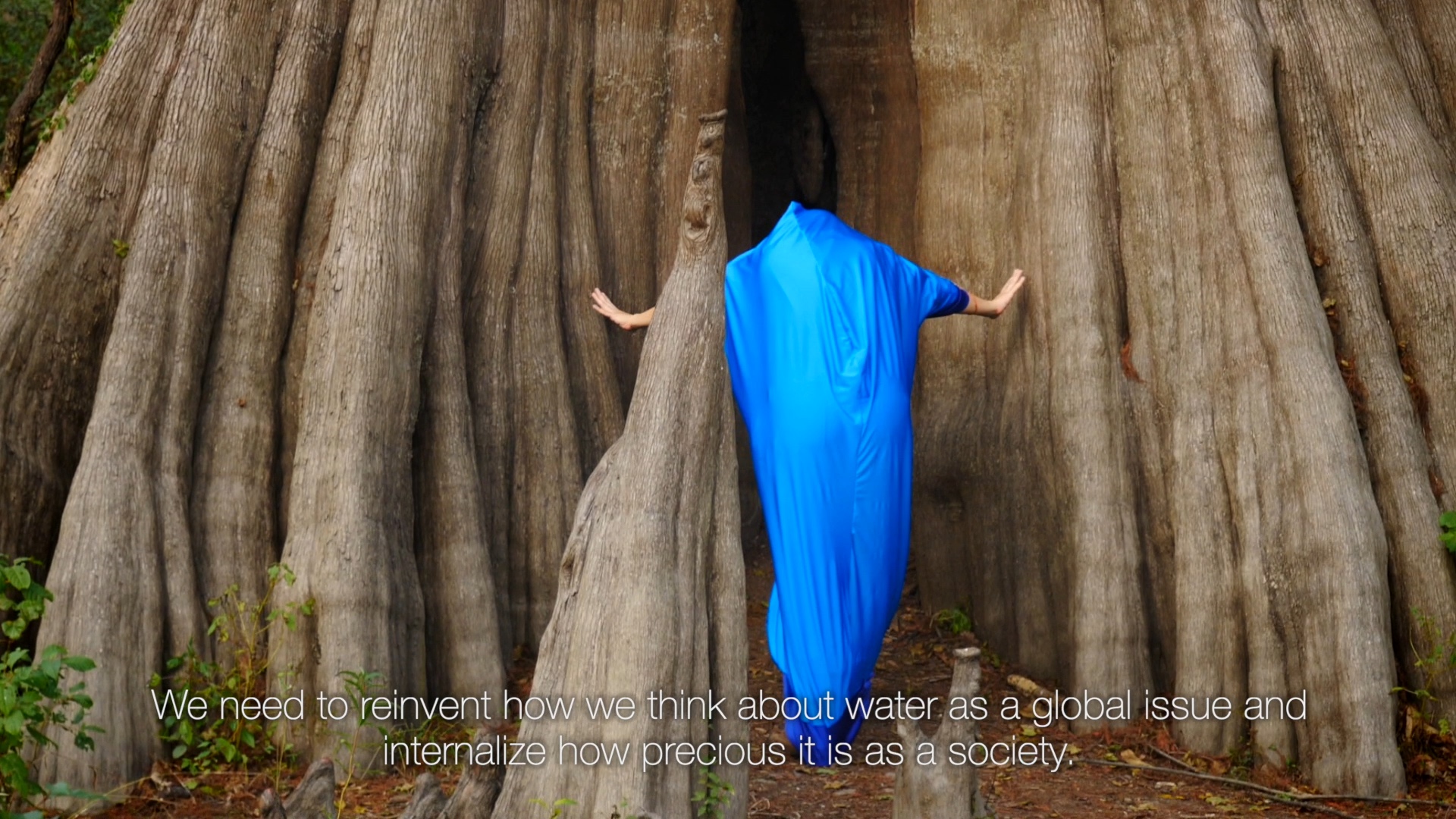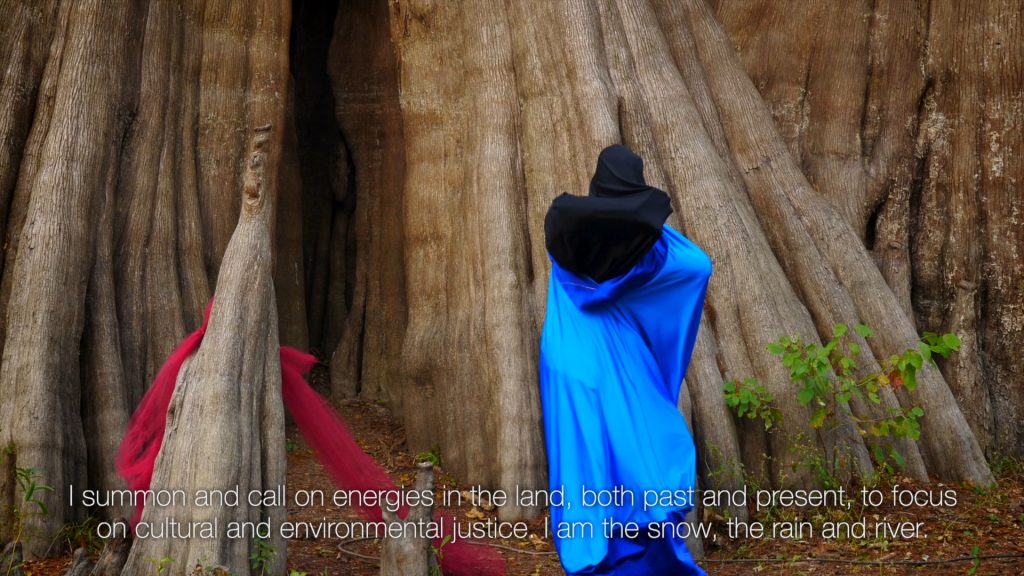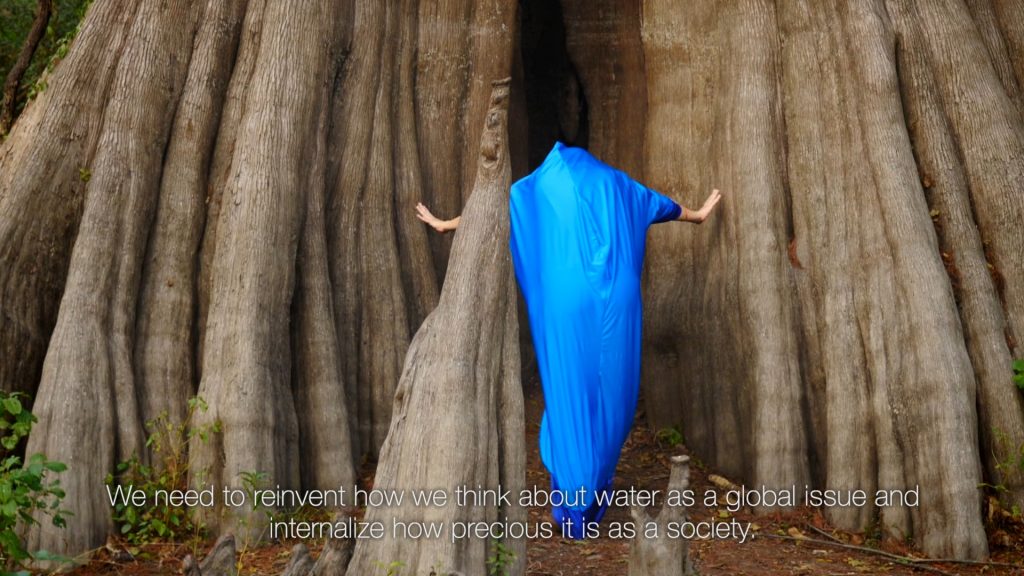Salt in the Mississippi is a video performance project that was shown at the Erie Art Museum in Erie, PA in December 2022. It was shown with the work of several other artists at a screening I organized in collaboration with the museum staff. I wrote a grant to the Foundation for Contemporary Art for the production of my piece.
Video Titles
Cat Island, just north of St. Francisville, LA, is located on the banks of the Mississippi, surrounded on three sides by a bend in the river. The largest known bald cypress tree in the United States is located here.
Cat Island is subject to extreme flooding during heavy rains and is inaccessible most of the year. This performance took place while the river was at its lowest level in ten years, illustrating the extreme drought in the northern Mississippi river basin.
Due to the ongoing drought that’s spreading across from the western US, the Mississippi River isn’t receiving the water it needs. This problem is cumulative and is pervasive in much of the midwest as well.
Water is interconnected across regions and around the world. Snowfall each year melts and runs into the Mississippi, affecting ecosystems beyond.
Water is something that we all share, and it can be addressed locally to support this vital collective resource.
With less snow and rain entering the river, the Mississippi’s flow has fallen to a level that allows a wedge of salt water from the Gulf to intrude at the delta and travel upriver.
Exacerbated by the choice to artificially deepen the shipping channel, this saltwater intrusion is now threatening drinking water supplies of people who are already vulnerable to other aspects of the climate disaster.
The salt is destroying precious forests and delicate freshwater ecosystems.
A sand sill is being built to slow the advance of the salt water, but it is only so effective. It is a temporary structure that needs to be rebuilt every five years.
This tragedy, although dispersed and unseen in many ways, can be an example, a mirror for us to consider how we are stewarding the land and water in our region, and how that will impact all the people living there — their health, livelihoods, and quality of life.
As the salt water enters the mouth from the Gulf of Mexico and travels further and further up the Mississippi River this quiet but tragic contamination of freshwater continues.
The cypress tree is a symbol of the protection of water and land in coastal swamp areas. Its roots interweave with neighboring trees for added fortitude, a demonstration of collective action to help keep coastal forests intact.
This tree is 83 feet tall, 54 feet in circumference, and 17 feet in diameter. It is the 6th largest tree in the country and is the largest tree of any species east of the Sierra Nevada Mountains. It is estimated to be about 1000 years old.
I honor this tree and the quiet healing and protection it provides the land. May we honor and protect the cypress as we honor and protect one another, the land we occupy, and the water that nourishes our bodies.
Foundation for Contemporary Art Grant
I currently have two pieces in a group show at the Erie Art Museum. I have been in conversation with the curators, and they invited me to create and present a performance by way of a new video work at their upcoming Gallery Night event on December 16, 2022. At this event, they open their galleries to the public for free and the video will have a wide audience. I have photographic pieces on display in a group show at the museum at this time, so it’s a special opportunity to show two aspects of my work together to a new audience in a prestigious venue.
I make wearable sculptures that I transform with dance and movement, and for this screening, I will create a video work of movement performance with fabric sculptures shot on location in Cat Island National Wildlife Refuge in southern Louisiana.
I’m based in Pittsburgh, PA, and New Orleans, LA, and I’m interested in the interconnectedness of water across regions and around the world. For instance, the amount of snowfall each year that melts and runs into the Mississippi affects so many ecosystems beyond where the original snow fell. I want to use this work to explore how I can help an audience learn about pressing with climate.
This silent film with captions will focus on how water is something that we all share, and how it can’t just be addressed locally. We need to reinvent how we think about water as a global issue and internalize how precious it is as a society. This is an important issue to bring to larger audiences, especially in museums that are likely to be visited by people who are in positions of power.
I want to bring a message from Louisiana, which is feeling the drought like so many other places in the country. Currently, low water in Mississippi is actually causing salt water from the Gulf to flow upriver, contaminating the drinking water of already under-resourced populations and killing precious forests. The rapid destruction of forests and wetlands in Louisiana is an untold story in many ways, especially in the north, and as well as exploring this tragedy for its own sake, I seek to use it also as mirror for all of us to consider how we are stewarding the land and water in our region, and how that will impact all the people living there – their health, livelihoods, and quality of life.
As an interdisciplinary artist who works with sculpture, movement, and performance, I am constantly exploring new ways to use and present performance to create immersive experiences for audiences that explore themes connecting the body and the land. I’m using my work to summon and call on energies in the land, both past, and present, with a focus on cultural and environmental justice. In the performance, I’m using wearable fabric sculptures that are performed and unfolded like a large abstract puppet show. Using symbolic shapes and colors, I will perform the snow, the rain, and river. In my recent work, I have been using fabric sculptures to define the boundaries of my body – where I begin and end – in a natural environment. I am touching the borders of where humans have interacted with an environment, how the changing of that environment has been brought on by humans and the effects of climate change, and how it affects humans in that place now.



